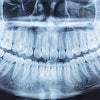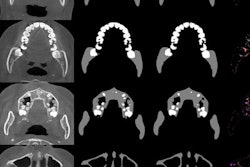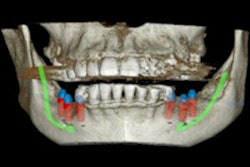Dear CAD/CAM Insider,
A clever use of CAD/CAM technology brought a smile to a patient with primordial dwarfism, a group of disorders in which a person experiences delayed growth, resulting in small body size and numerous dental manifestations.
The patient in the case had limited mouth opening that hindered the dental team from taking conventional impressions. Instead, the group used a creative mix of cone-beam computed tomography (CBCT) imaging, intraoral scans, and software to give the patient beautiful new implant-supported dentures. Learn more in our Insider Exclusive.
Also new in the CAD/CAM Community is coverage of an algorithm that highlights the potential of artificial intelligence for dentistry. While it took humans nearly five hours to segment the teeth and jaw on a CBCT scan in a recent study, the algorithm completed the task in just 25 seconds.
April was National Facial Protection Month, and while the occasion is over, it's not too late to talk about mouthguards with patients and families. Dr. Louis Rafetto, an oral surgeon and spokesperson for the American Association of Oral and Maxillofacial Surgeons, spoke with DrBicuspid.com about mouthguard facts and myths.
In other news, a team of global researchers used high-resolution imaging to reveal never-before-seen dental details in a 3.67-million-year-old skull of a prehuman ancestor known as Little Foot. 3D reconstructions of Little Foot's lower left canine revealed new insights about her life.
Those researchers weren't the only ones to get creative about the use of dental imaging. In March, researchers described how they used a dental x-ray scanner to virtually unfold and read a sealed letter from the Renaissance in Europe. Computational algorithms helped to identify and separate the different layers of the folded letter, allowing the team to read writing sealed in 1697.



















